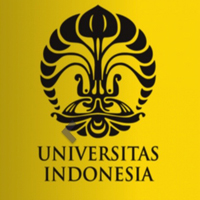Blow pinwheels improve oxygen saturation of preschool children with post pneumonia in outpatient pediatric departement

Published: 20 May 2021
Abstract Views: 2327
PDF: 565
Publisher's note
All claims expressed in this article are solely those of the authors and do not necessarily represent those of their affiliated organizations, or those of the publisher, the editors and the reviewers. Any product that may be evaluated in this article or claim that may be made by its manufacturer is not guaranteed or endorsed by the publisher.
All claims expressed in this article are solely those of the authors and do not necessarily represent those of their affiliated organizations, or those of the publisher, the editors and the reviewers. Any product that may be evaluated in this article or claim that may be made by its manufacturer is not guaranteed or endorsed by the publisher.
Similar Articles
- M. Messina, F. Molinaro, D. Meucci, R. Angotti, L. Giuntini, E. Cerchia, A.L. Bulotta, E. Brandigi, Preoperative distraction in children: hand-held videogames vs clown therapy , La Pediatria Medica e Chirurgica: Vol. 36 No. 5-6 (2014)
- G. Piergallini, A. Malerba, L. Mazzucchelli, L. Strohmenger, Generalized aggressive periodontitis in prepubertal age: description and comparison of two cases , La Pediatria Medica e Chirurgica: Vol. 36 No. 4 (2014)
- Agostino Berio, Attilia Piazzi, Carlo Enrico Traverso, Kearns-Sayre syndrome with facial and white matter extensive involvement: a (mitochondrial and nuclear gene related?) neurocristopathy? , La Pediatria Medica e Chirurgica: Vol. 39 No. 4 (2017)
- M. Gasparella, M. Ferro, M. Marzaro, C. Benetton, C. Zanatta, F. Zoppellaro, Acute abdomen in children: a continuous challenge. Two cases report: Meckel’s Diverticulum with Small Bowel Volvolus and Internal Herniation related to Epiploic Appendagitis mimicking acute appendicitis , La Pediatria Medica e Chirurgica: Vol. 36 No. 2 (2014)
- Salvatore Fabio Chiarenza, Lorenzo Costa, Cosimo Bleve, Torsion of cecal appendix. Report of the first Italian case and review of the literature , La Pediatria Medica e Chirurgica: Vol. 43 No. 1 (2021)
- M. Cimador, M. Pensabene, F. Siracusa, Laparoscopic management of an isolated left fallopian tube torsion due to twisted Morgagni Hydatid in a pre-menarcheal girl , La Pediatria Medica e Chirurgica: Vol. 36 No. 2 (2014)
- Edoardo Bindi, Fabiano Nino, Francesco Pierangeli, Michele Ilari, Taisia Bollettini, Elisa Chiarella, Francesca Mariscoli, Gianluca Gentilucci, Alba Cruccetti, Giovanni Cobellis, Transumbilical laparoscopic-assisted appendectomy versus laparoscopic appendectomy in children: a single center experience , La Pediatria Medica e Chirurgica: Vol. 45 No. 1 (2023)
- Salvatore Fabio Chiarenza, Cosimo Bleve, Elisa Zolpi, Francesco Battaglino, Lorella Fasoli, Valeria Bucci, Endoscopic balloon dilatation of primary obstructive megaureter: method standardization and predictive prognostic factors , La Pediatria Medica e Chirurgica: Vol. 41 No. 2 (2019)
- E. Ruffini, L. De Petris, P. Candelotti, M. Tulli, M.R. Sabatini, L. Luciani, A. Carlucci, Lung abscess in a child secondary to Mycoplasma pneumoniae infection , La Pediatria Medica e Chirurgica: Vol. 36 No. 2 (2014)
- Rose Nirwana Handayani, Defi Efendi, The impact of multiple insertions on peripheral intravenous access in low-birth-weight infants in perinatology , La Pediatria Medica e Chirurgica: Vol. 43 No. s1 (2021)
You may also start an advanced similarity search for this article.

 https://doi.org/10.4081/pmc.2021.263
https://doi.org/10.4081/pmc.2021.263




